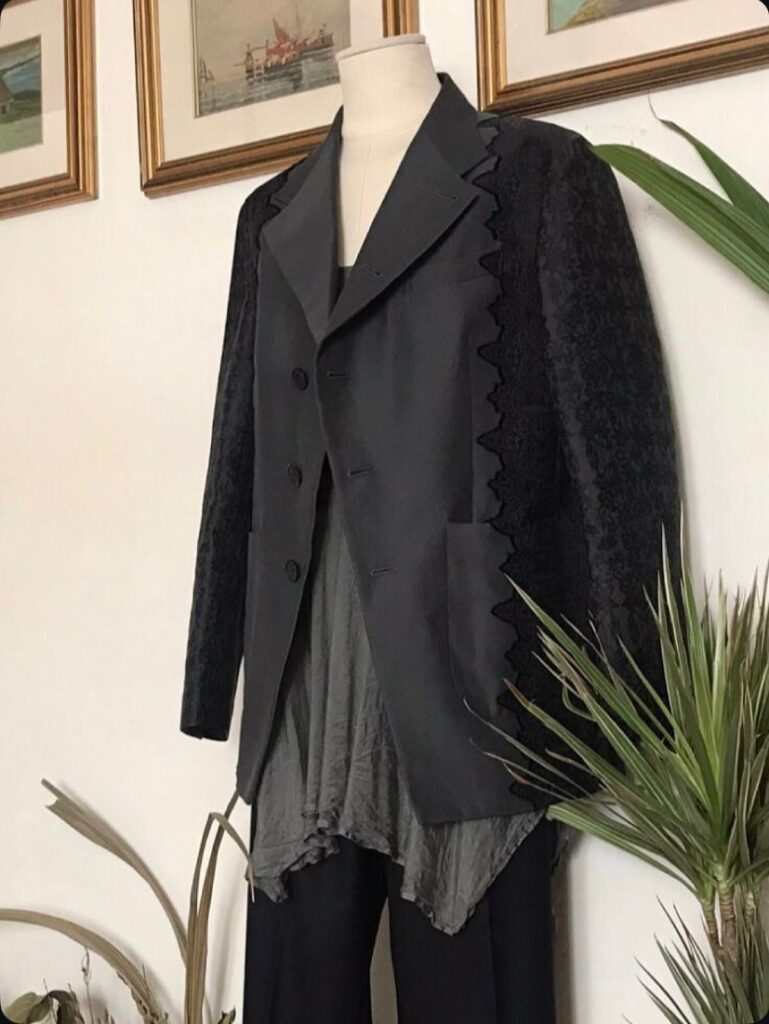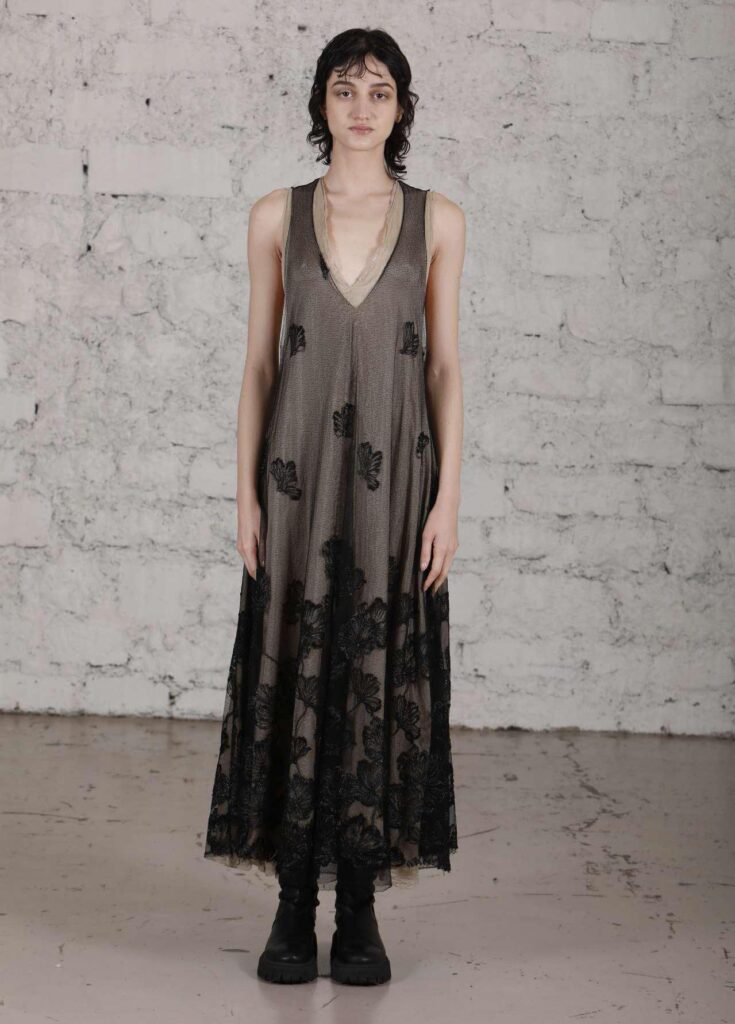One piece, one story: The Lace Jacquard Blazer by Meagratia
A dialogue between strength and fragility—for those who dress in contrasts
The Lace Jacquard Blazer by the Japanese brand Meagratia. In a system that makes tonnes of disposable clothes, we curate: One piece, one story. A radical view for ethical and aesthetic resistance—meaningful garments expression of good design. Slow fashion made to last.
The Lace Jacquard Blazer does not simply hang on the body; it engages it in a quiet debate. Structure argues with delicacy. Masculine tailoring is answered by the feminine whisper of jacquard lace. Meagratia’s gesture is not one of collision, but of careful, considered fusion.
Charcoal grey—not the anonymous grey of concrete, but the deep, mineral grey of a stormy sky just before the rain. A colour that contains its own weather.
A woman sits in a sparse, light-filled studio, all polished concrete and reclaimed wood. She is wearing the blazer over nothing but a simple slate-grey tank top and tailored trousers. The sharp line of the lapel frames her face; the lace at the sleeves reveals a glimpse of wrist and skin. Her posture is both relaxed and authoritative.
She is not dressed for an audience, but for herself. The asymmetric buttons are fastened just so—a detail for those who notice the details.
The silence in the room is not empty; it is charged with intention.

The architecture of a contradiction
- The fabric: A jacquard lace of polyester and cotton. This is not a confession of natural fibres, but a statement of modern pragmatism. The lace provides the poetry; the blend provides the resilience, allowing the delicate structure to hold its own in the world.
- The lining: 100% cupro. This is the secret. A silken, breathable caress against the skin, a hidden luxury that the wearer carries within the blazer’s assertive shell.
- The make: Made in Japan. This is not a location, but a credential. It speaks of a culture where the seam is respected, the detail is honoured, and the process is as important as the product.
The Lace Jacquard Blazer: Wear it as your second argument
This is a piece that earns its intelligence through wear. It recognises that identity is not monolithic, but a collection of contrasting truths.
- For the boardroom that needs a tremor of poetry: Paired with wide-leg wool trousers and sharp loafers. The lace at the cuffs is your only jewellery.
- For the evening that defies definition: Thrown over a fluid, black silk dress and heavy boots. The structured shoulders stand out against the night.
- For the everyday act of being complex: With faded denim and a white t-shirt, transforming the mundane into a considered statement.
For the modern humans who curate, not consume—whose wardrobe is a library of dog-eared favourites, each piece a chapter in their story.
🌟 The Lace Jacquard Blazer by Meagratia
A limited dialogue between shadow and light.
🖤 To inquire: DM @suite123 | WhatsApp | e.mail
Available by appointment for shopping in Milano or worldwide—from screen to doorstep. From our hands to your story.
P.S. Ask us about the Japanese workshop behind this blazer, or how to break its formality with your most worn-in jeans. We are here for the conversations, not just the transactions.
Footnotes: The cupro lining is a lesson in hidden grace. It teaches that true sophistication lies in what is felt, not only what is seen.
One piece, one story: The Lace Jacquard Blazer by Meagratia Read More »

